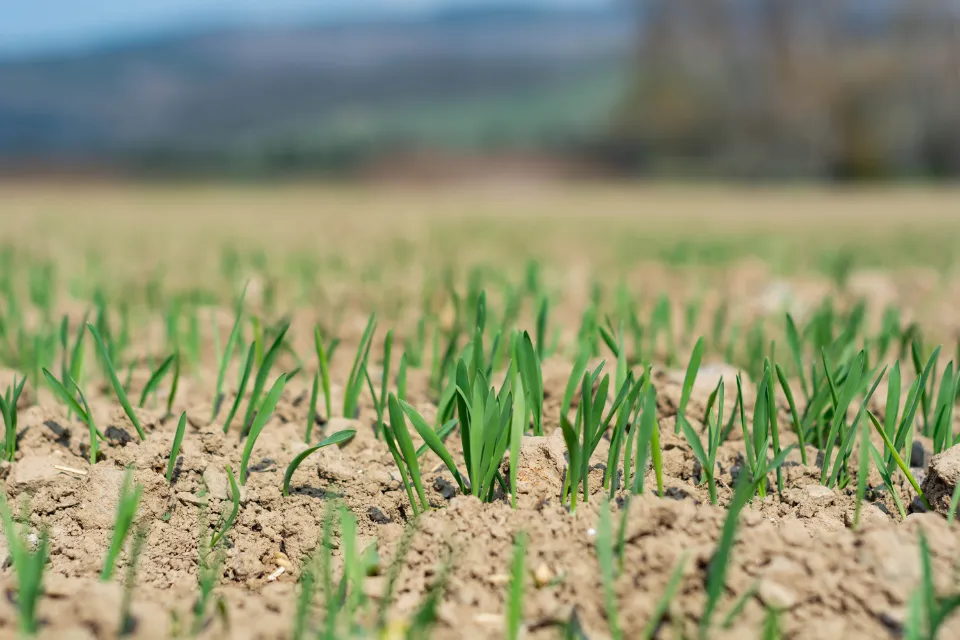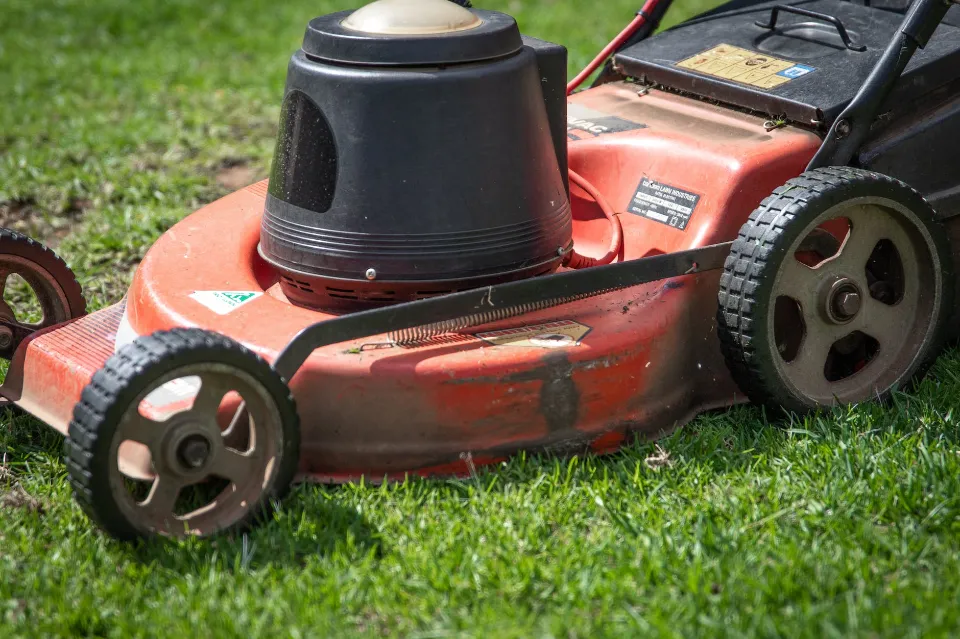The top dressing should ideally only be a few centimeters deep, allowing the tips of the grass blades to be clearly visible poking through.
It is not only very advantageous, but top dressing frequently results in time savings when done in conjunction with other lawn care maintenance procedures. Therefore, scarifying or aerating your lawn should be done before top dressing. Always be mindful of timing; only carry out this action when favorable growth conditions exist.
What Does Top Dressing a Lawn Mean?
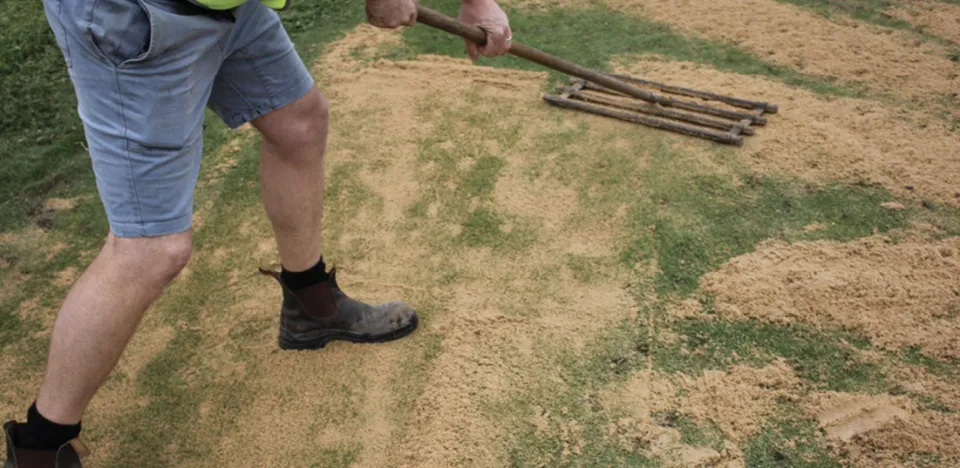
It typically takes a ton of synthetic fertilizers and pesticides to keep lawns lush and plush. Even though this is a common practice, you can get just as good of results by regularly top dressing and using a few essential all-natural products to help your soil get healthier.
Spreading a thin layer of sand or composted organic matter over your turf will ensure your lawn grows as much as it can naturally. Many homeowners use this technique, known as top dressing, as a sustainable way to maintain their lawns’ health and vitality.
Why Do We Need to Top Dress a Lawn?
To ensure that the grass is thick and distributed evenly, your lawn needs regular feeding. When used in conjunction with nutrient-rich organic fertilizers, top dressing can be a turf’s most potent booster. These are the many benefits that your lawn will get when it’s top dressed:
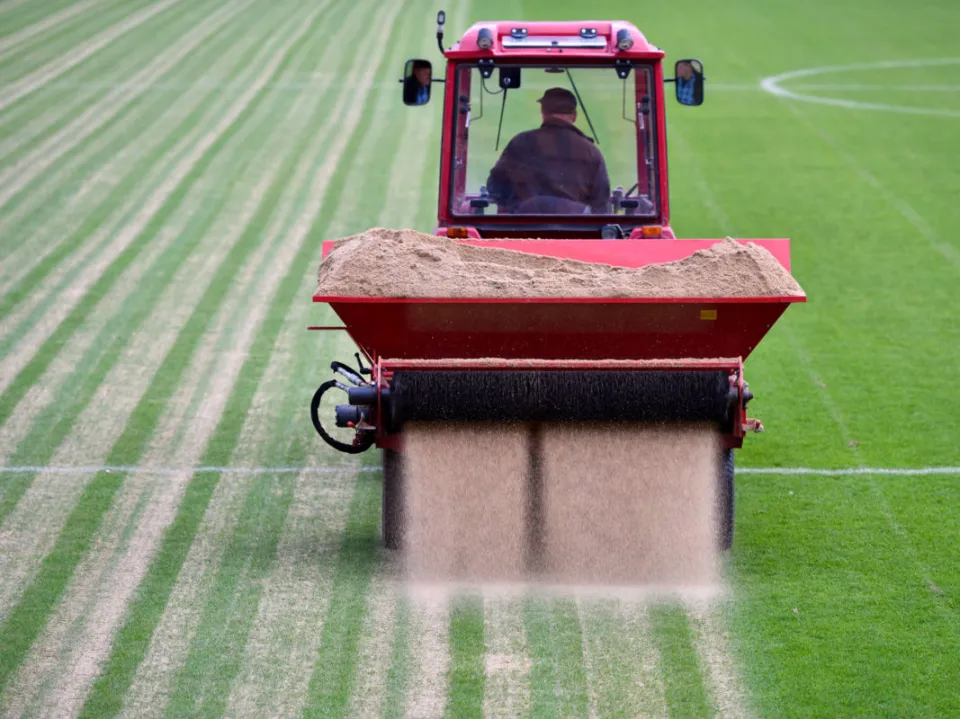
- Increases nutrient retention
- Strengthens the turf, reducing pest attacks and diseases
- Improves soil drainage
- Makes for greener turf
- Reduces thatch
- Promotes root growth
Planning & Preparation for Top Dressing
Overseeding the lawn will be necessary if there are thin or bare patches of grass, if the lawn has been scarified, or if you simply want to add newer grass varieties. The new grass seed ought to be added after remodeling and either before or after top dressing. It might be best to seed the lawn after applying a lot of top dressing to prevent the seed from being moved around as you rake and level the dressing. However, if you are only lightly top dressing, you could add the lawn seed first so that the dressing will go on top and help protect the seed from birds and rain.
The top dressing and seed may even be mixed together to save time, depending on the book you read. Unfortunately, the seed seems to make more work when it goes into the dips rather than the bumps, where the top dressing goes!
How to Top Dress Your Lawn?
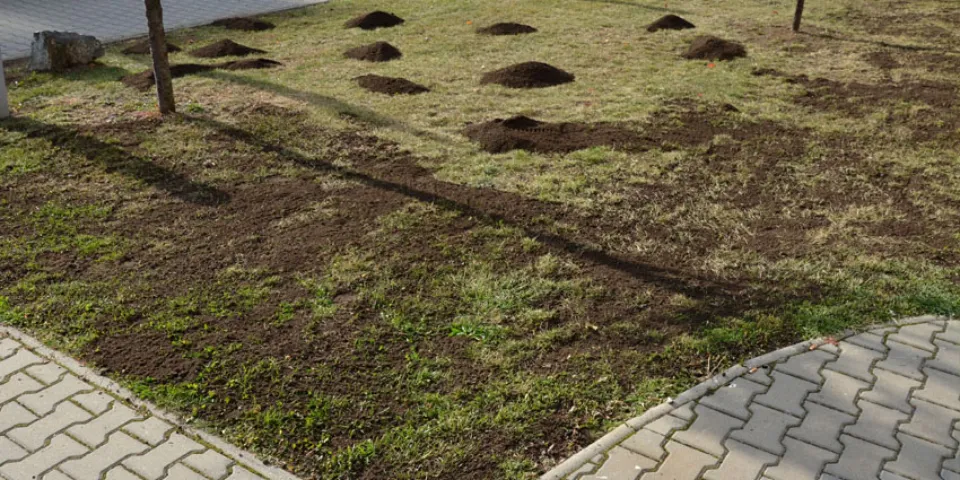
A lawn can be easily top dressed. To make the process a little simpler, you can decide whether to complete it all at once or in sections. If there are any small areas of your lawn that require a little extra attention, such as bare spots or areas with a lot of thatch, you might want to start by top dressing those first.
You must gather a few materials before beginning. This can include:
- Top dressing soil
- Wheelbarrow
- Gardening gloves
- Lawn leveller
- Rake
- Lawn aerator
Step 1: Decide on the Material
Selecting the material you want to use for your top dressing will be your first step. Compost, sand, or a combination of the two may be used in this. It’s crucial to make sure compost is well-aged and has been thoroughly decomposed if you decide to use it. Sand typically works well for clay soils while compost can be helpful for both sandy and clay soils.
Read More: How Often Should You Apply Sulfur to Lawn?
Step 2: Dethatch Your Lawn
It’s time to start dethatching your lawn after choosing the material you’ll be using. While a small amount of thatch can be beneficial for maintaining the health of your lawn, too much can prevent water and air from penetrating the soil. A lawn aerator or a rake and your hands can be used to dethatch a lawn. Typically, you can rent an aerator from a hardware or nursery store nearby.
Step 3: Mow Your Lawn
Mowing your lawn is the next step in the top dressing procedure. As you mow your lawn, use a catcher to scoop up the cut grass from the surface. Compost can be made from these trimmings and used in the garden in the future. A short cut can harm your lawn, so be careful when mowing it.
Read More: How Often Should You Mow Your Lawn – Tips & Suggestions
Step 4: Top Dress Your Lawn
The top dressing soil should be distributed evenly across your lawn using a wheelbarrow. It is simpler to spread out evenly if you deposit the soil in smaller amounts. You can start spreading the soil across the lawn’s surface once you’ve created these little piles of soil all over it or in the areas of your lawn that need special attention.
To move the soil around, one method is to use the garden rake’s smooth side. A lawn leveller is one of many tools that can be used to make the top dressing process even simpler, but they aren’t always necessary. A lawn can still receive sunlight if the top of the grass is left exposed rather than completely covered in soil. Give your grass a good watering to help the soil settle in after the top dressing has been applied evenly across your lawn.(Read More: How to Fix Dead Grass – Ways & What to Avoid)
Quantity of Top Dressing Soil
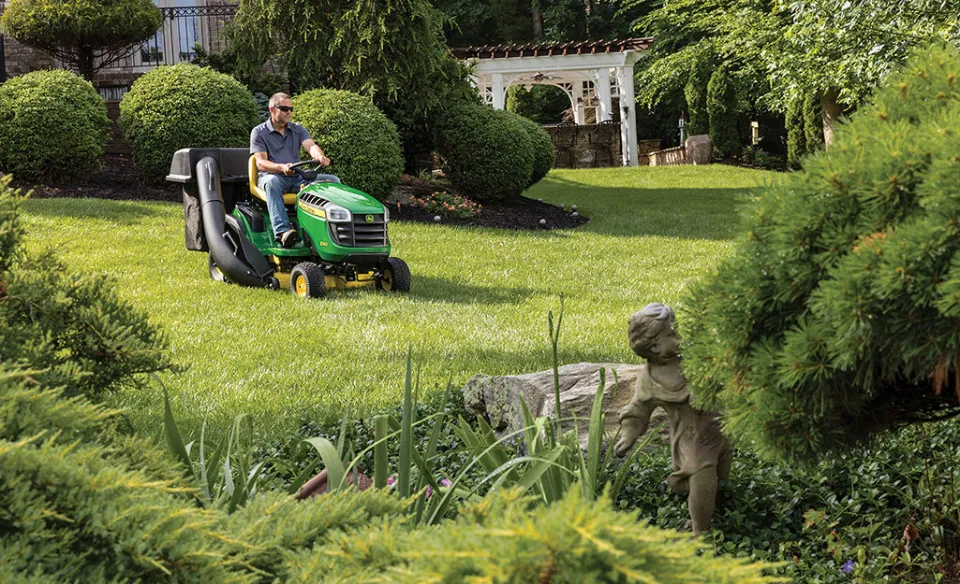
If this is being done purely to smooth the lawn then you can apply at 3 to 4 kilos per square metre which will give about ¼” or just over half a centimetre in depth. Of course, the dips will grow more, but you must avoid smothering the grass. 75% of the leaf must be visible according to the rule. At this rate, you might be able to top dress once in the fall and twice in the spring, if necessary.
For ornamental lawns where this is being done frequently as part of a lawn care program, I wouldn’t apply at more than 1 to 2 kilos per square metre, with one kilo being preferred. You can repeat this as often as you like throughout the growing season by applying at a rate of half to one kilogram. On fine lawns, this trickle dressing blends in better, accelerates thatch breakdown, and is less obvious.
Application of Top Dressing
On a dry day, cut the grass short and treat the lawn with dry dressing.
Divide your top dressing into several smaller batches and distribute them evenly across the lawn. This implies that there will be a soil mound every few meters.
Spread each pile out over the space that has been designated for it. You can do this by snatching it up with your spade and tossing it into the designated space or by pushing and pulling it into position using the back of a rake. The best tools for this are landscapers or dummy rakes.
The top dressing must then be brushed or worked into the grass and dips. The back of a rake can only move the dressing into the turf so far; therefore, you now need either a stiff brush or a leveling lute. Although it takes some time, a little care will result in a surface that is much smoother. You risk making the lawn more uneven if you don’t properly work it into the hollows.
In order to apply the top dressing evenly and as part of a quality lawn care program, a “top dresser” or heavy-duty drop spreader is the only option.
Over Seeding
The best way to ensure that the seed doesn’t get mixed up with the soil as you work it in when top dressing and over seeding is to plant the seed after applying the top dressing. Once seeded, lightly brush the seed into the loose top dressing, firm the surface with your hands or a rolling pin, and fertilize with a seasonal fertilizer. If you’re fertilizing in the spring, use a feed for all lawns or one for sandy soil even if your soil is clay. Last but not least, begin watering frequently to prevent seed evaporation or watering while covering with polythene.
Final Words
We hope you’ve enjoyed learning about top dressing your lawn and why it can be a smart idea to give your grass a little boost. Although top dressing a lawn is typically a straightforward process, some people (especially those who have larger lawns) may find it to take a little bit of time.
FAQs
When Should You Top Dress Your Lawn?
In the growing season, NOT in the winter, you must top dress. Generally speaking, top dressing is best done in the spring or as soon as you have finished your usual weekly mowing. Better results are obtained earlier in the growing season. The ideal time is typically late spring to early summer.
Is Top Dressing Good for Your Lawn?
Over time, top dressing will enhance the soil’s general quality, which will encourage new growth. Sandier soils increase the lawns’ capacity to hold onto moisture, strengthening their resistance to drought. If your soil is clay-based, it will be able to drain better, enhancing the growth of the roots.
Should I Use Fertilizer Or Top Dressing?
No matter if the top dressing is to add nutrients, fill in holes, or level out an uneven lawn, it is advised to fertilize the lawn a week to two prior to applying it. This increase in grass growth will make it easier and quicker for the turf to sift through the dressing.

